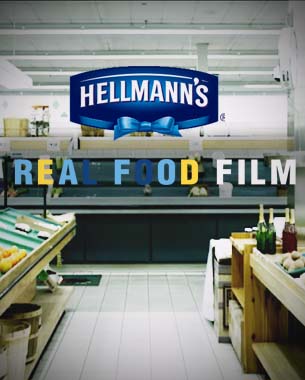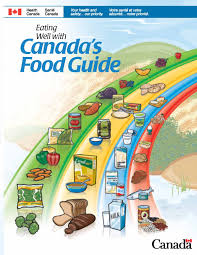I recently participated in a project called #mytomato which was sponsored by Hellman’s. The point was to bring awareness to the concept of food deserts which can be loosely defined as geographical regions which have limited availability to fresh, quality produce at a reasonable price. Food deserts are a component of a broader issue called food insecurity which is loosely defined as the inability for a person to buy the food they want to buy when they want to buy it. It’s the mother who chooses evaporated milk instead of formula for her baby because it is all she can afford. It’s the father who can’t buy ground beef anymore because the price has doubled in the last 2 years and he needs to pay rent so it no longer fits in the food budget on a regular basis. This is not the same as a decision to not buy a cut of steak because it is too expensive. The difference is choice. I could buy the striploin if I wanted to but the decision not to is more of a value assessment than one out of necessity.
The #mytomato campaign involved the transformation of a GTA grocery store into one more reflective of a food desert experience. As a participant, I was asked to enter the store and react to what I saw. The produce was scarce, of questionable quality and priced through the roof. Among the limited choices was a $69 watermelon and tomatoes priced at $18.00/kg. A subsequent interview allowed me to state that I would have a hard time feeding my family the way I wanted to if this what was available on a regular basis.

The campaign launched on facebook, twitter and youtube with reasonable fanfare. There were comments reflecting sides of the fence. On one side there was sympathy for the situation whereas others suggested that the ridiculous prices reflected supply and demand, meaning that if people aren’t interested in buying fresh tomatoes they won’t which raises the prices for those who do. Another keen observer quoted the price of tomatoes in their community but also cited the price of a jar of Hellman’s at $6.49 which is significantly higher than what you would see if a Southern Ontario grocery store and points to the fact that it isn’t only produce prices that are affected by geography . Then, as quickly as it started, the campaign vanished. The facebook comments stopped and the youtube clip is now unviewable and listed as private. When I inquired about the reason for the rash cessation, I was told that a few retailers objected to the campaign so it was terminated.
(Don’t Bother…you can’t see anything)
I got thinking about this and a number of interesting issues came to mind which merit a discussion. There is the clash of big business versus big business, the issue of convenience versus necessity, the responsibility of government or other agencies in the regulation of food prices and the acceptability of corporate involvement in campaigns which deal with public health or social issues.
1. Big Business versus Big Business
Hellman’s parent company is Unilever, a multinational conglomerate who produces and markets some of the most recognizable brands across most sections of the grocery store. As a result, there is the need for Unilever to work with these retailers to ensure that they get ample shelf space and a strong visual presence in a highly competitive environment. That said, I imagine the saying “Don’t bite that hand the hand that feeds you” enters the discussion. If Hellman’s #mytomato campaign suggests that the retailer is even partially responsible for the inflated price of poor quality produce, then there could be a harsh retaliation including the omission or displacement of Unilever products from shelves. We are not talking small mom and pop shops either. The big three (Loblaw, Metro and Sobey’s) have an infrastructure in place which services everywhere from downtown Toronto to remote communities across Canada. As a result, pissing them off may have ramifications far beyond a few towns speckled above the 60th parallel. Nobody wants to loose the opportunity to have their mayo shelved at eye level after all.
2. Convenience versus Necessity
We live in a society where convenience has evolved into necessity. It also comes at a price. If I run out of bread at 11 at night or don’t want to make the long haul to the grocery store during the day, there are at least three convenience stores within a kilometre or two of the house which will gladly sell me a loaf of its finest Wonder bread for 5 bucks. In either situation, I have a choice. I can wait it out or get off my ass and drive the extra kilometre to grab a loaf. The same opportunity doesn’t exist in remote communities. In this case, the alternative may not be a kilometre but instead a hundred kilometres. In order words, the grocery store IS the convenience store simply because it’s the only one in town. The interesting question is whether the inflated prices are a reflection of the realization there is a monopoly and that most local residents are handcuffed or the fact that the store is in a small town which means less volume and therefore lower overall sales. Maybe it’s a little of both. It’s no secret that a grocery business involves razor thin profit margins which in most cases rely heavily on high volume to succeed and that the only way to sustain profits in a smaller store may be to increase prices.
3. Government Responsibility
The question arises as to whether the government or some other organization should be responsible for regulating food prices across the province or country. I suspect most would argue that we do not need big brother to monitor the price of a tomato. Sure, affordable produce would couple nicely with the numerous (and generally unsuccessful) public education strategies geared at increasing the population’s fruit and vegetable consumption. I find mundane strategies including Canada’s food guide lose steam when a person is asked to spend beyond their means or purchase unavailable foods to ensure a variety are included in the diet. I have to disagree with those who suggest that regulation of food prices is impossible. If there was financial incentive to do so, I’m sure the government would not hesitate to employ an infrastructure to ensure it got its fair share. Think of beer and alcohol sales. The price of a case of beer is the same whether you live in downtown Toronto or in Red Lake, Ontario. Beer is heavy, boxy and requires refrigeration yet these burdens of transportation doesn’t add to the price in remote communities. Maybe it has something to do with the fact the government scoops a tonne of revenue with every case sold. Since produce isn’t taxed one can speculate the urgency to regulate produce (or even food) prices in general is less than a priority for a cash-strapped government. It is cheaper and less difficult just to run ineffective healthy eating campaigns through public service announcements than it is to implement tangible policies changes which might actually result in behavioral change.

4. Corporate Involvement in Public Health Campaigns
The last argument is whether or not big corporations should even be involved in health promotion or campaigns. On one side, I have read numerous criticisms of Hellman’s investment in its real food movement. Some question how real mayonnaise actually is. On the other side, supporters feel that big business should be obligated to funnel resources into strategies which potentially better society as a whole. That said, philanthropy rarely comes with no strings attached and I’m not sure there’s a problem with this. I guess the bigger question is where to draw the line. A hands-off financial sponsorship? A partnership with third party consultants? A jump into bed as long as the outcome is good relationship? I think delving into this at this point is beyond the scope of this particular entry blog (I think I’ll tackle this one separately) but it is ” real” food for thought.
My Take
A little over a month and a half ago Hellman’s launched the next installment of their real food movement which involved a closer look at food deserts which are defined as areas in Canada that have limited availability to fresh and affordable produce on a regular basis. As quickly as it went up it came down and now has all but disappeared presumably due to pressure from retailers who took offense to Unilever’s finger pointing. In other words, addressing food deserts essentially caused the biggest consumer product company globally after P&G and Nestle to drop to their knees and assume the fetal position, presumably over fears that they would lose prime real estate in the condiment section. This makes me concerned that any resolution to the problem of food desserts is nowhere in the immediate future. Big companies will simply abandon such fruitless endeavors and replace them with smiling celebrity chefs handing out tomatoes at food fairs (which I’m sure goes over well with those who are selling deep fried dough). Given relatively lower sales volumes, retailers in remote communities will continue to stick to a supply and demand system to ensure their thin profit margins are just a little thicker . Government will continue to address the issue by using money generated from liquor sales to produce colourful sheets to remind us that fruits and vegetables are an important component of a healthy diet while they rot in produce bins due to exorbitant cost and poor quality.
I don’t know the solution for food deserts. Retail subsidies by either the government or by companies seems feasible, especially if funneled through the big grocery chains. An issue might be the need to negotiate with franchisees but perhaps it can be offered with incentives in the same way weekly flyer specials from the parent company work. Maybe a coupon system specific to produce could be created. I would hate to compare this strategy to food stamps but it may be the easiest way to facilitate and specify corporate and/or government investment in this initiative. Plus, it would be an interesting social experiment and one which could test the validity of the famous Field of Dreams catch line “If you build it they will come” since one of the biggest arguments against providing fresh, affordable produce is the speculation that it would just sit there anyway because consumers would still opt to spend their food budget on other choices including non-perishables.
In the end, Hellman’s #mytomato campaign was a short lived mirage in an expansive food desert. The intent was good but was quality quashed by point of sale retailers (likely related to the big three) who likely feel handcuffed by an inability to offer fresh fruits and vegetables without cutting into profit margins and ultimately their own livelihoods. The solution is not evident but at the same time the problem shouldn’t fade into the sunset by pretending it doesn’t exist or by succumbing to the perception that if a powerful multi-national company like Unilever can’t tackle the problem then nobody can.